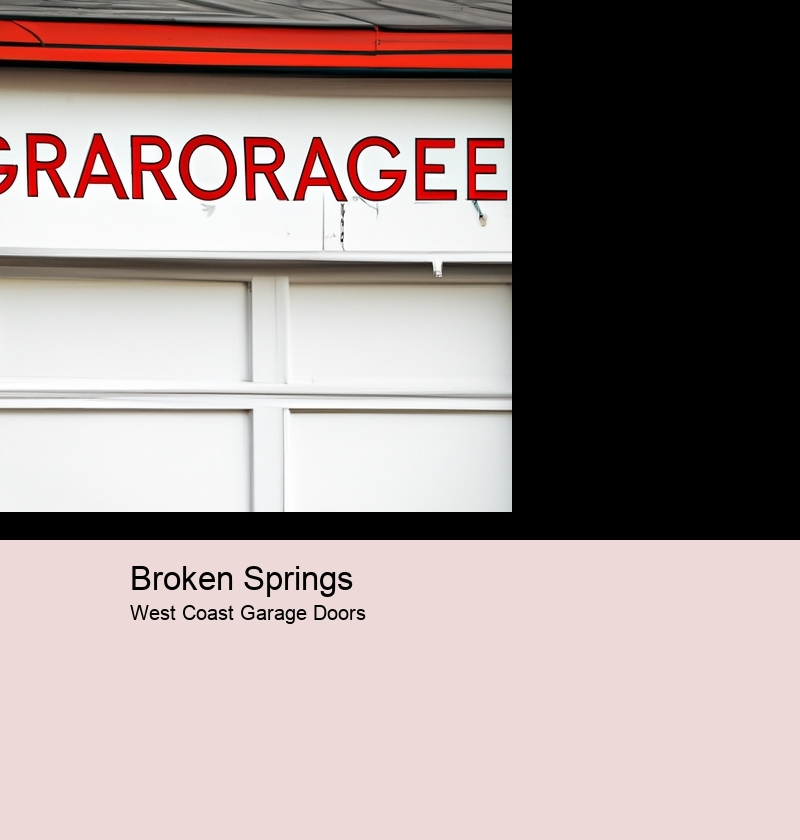Broken Springs
Attention
Causes of Broken Springs
Broken springs are a common issue that can affect any type of vehicle. Top garage door repair. . Fort Myers There are many potential causes for this type of problem, including rusting, wear and tear, incorrect installation, inadequate lubrication, or an accident. Rusting is one of the most frequent causes of broken springs due to the accumulation of moisture on exposed metal parts combined with oxygen in the air. Wear and tear from regular use can also lead to weakened springs over time. Incorrect installation can result in improper tensioning or alignment which leads to premature failure. Inadequate lubrication can cause friction between spring coils leading to breakage as well. Lastly, an accident or sudden shock may be enough force to snap a spring in two. Each of these potential causes should be considered when diagnosing broken springs on a vehicle and preventative maintenance should be done regularly to ensure their longevity.
Diagnosing and Repairing Broken Springs
Diagnosing and repairing broken springs can be a daunting task. It requires an understanding of the different types of springs, careful inspection of the damaged part, and precision when replacing it. Thankfully, there are a few basic steps that can help make this process easier. First, identify which type of spring is broken: compression or extension. Attention Compression springs are typically cylindrical in shape and used for applications such as valves and locks while extension springs have hooks on either end and are commonly used in garage doors. Bonita Springs Second, inspect the area around the broken spring to determine if any other components were affected during breakage. Third, remove the old spring from its housing using pliers or similar tools. Fourth, locate a replacement spring with identical measurements as the original one to ensure proper fitment. Fifth, carefully install the new spring into its housing making sure not to let go until fully secured in place. tilt door service Finally, test out your work to see if it functions correctly. With these simple steps you should be able to diagnose and repair broken springs with ease!
Replacing Damaged Springs
Replacing damaged springs can be a difficult, but necessary task. When springs break or become worn out, they must be replaced in order to ensure the safety and effectiveness of the device they are attached to. Replacing broken springs requires skill, patience, and tooling. The process involves disposing of the old spring, selecting an appropriate replacement part from a storehouse or catalogue, and then installing it correctly. It is important to pay attention to details when replacing damaged springs, as even small variations in size or tension can have serious consequences. Taking precautions such as wearing protective gear and using proper installation techniques will help ensure successful results.
Tips for Preventing Spring Damage
Spring damage can be a real pain, both financially and physically. However, there are some simple tips that you can follow to help prevent it from happening. First, always make sure to keep your springs well-maintained by regularly inspecting them for rust or corrosion. Additionally, if possible, try to avoid overloading your springs with heavy weights as this can cause strain and eventual breakage. Be sure to replace any broken or worn parts promptly in order to prevent further damage. Finally, if you live in an area with extreme weather conditions such as snow or hail storms, consider adding a protective cover over your springs so they don't get damaged by the elements. By following these simple tips for prevention, you can help ensure that your springs will stay healthy and strong all year round!
